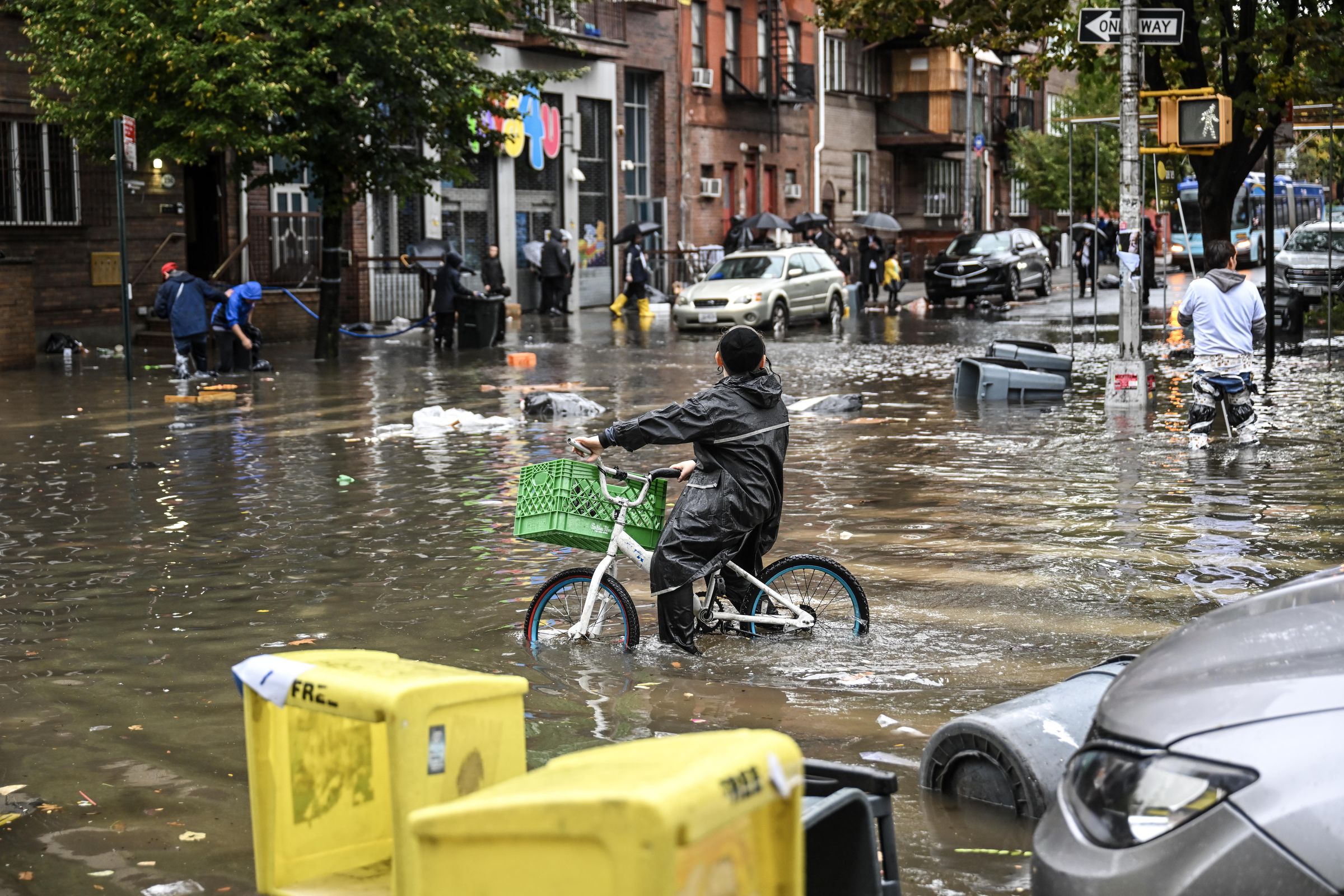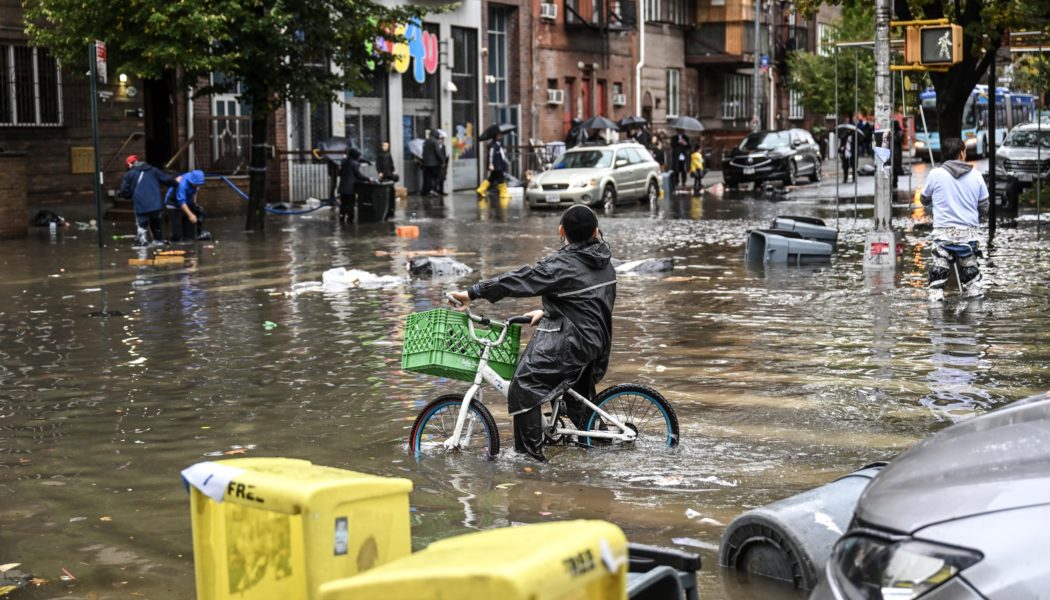New York declared a state of emergency as heavy rain led to flash floods in the city and other parts of the Northeast Friday. The Verge spoke with an expert about why cities shouldn’t be caught off guard but often are with floods.
Share this story

New York City came to a grinding halt Friday as floods shut down roads and subways and inundated schools in one of the biggest storm-related emergencies since the remnants of Hurricane Ida hit in 2021.
It isn’t a problem that’s unique to New York. Flood risk is rising across the US with worsening weather disasters and growing strain on outdated infrastructure.
What should a flood-proof city look like? The Verge asked Samuel Brody, Director of the Institute for a Disaster Resilient Texas and a professor in the Department of Marine and Coastal Environmental Science at Texas A&M University at Galveston.
This interview has been lightly edited for length and clarity.
Are cities uniquely vulnerable to flooding? And if so, how?
Absolutely. Cities have more impervious surfaces and are sprawling outward with roadways, rooftops, and parking lots. The water has nowhere to go but downstream and sometimes into people’s homes and businesses.
One of the trends we’re seeing nationwide is that flooding is occurring in places that we never thought would be the case, and that’s because of the role the human-built environment plays in exacerbating and sometimes entirely creating these flooding events. Some of that’s playing out in New York City today. If you look in the paper any given week, you’re going to see some kind of flood event in a developed area somewhere in the United States.
So it becomes very important for cities to think about their drainage infrastructure, and not just put appropriate size and effective drainage infrastructure in place, but monitor, maintain, renew, update those systems over time. Historically, in the United States, we’ve done a very bad job of that.
That stood out to me in the report you and other researchers published in 2018 that found that “Many of the urban wastewater and stormwater systems that provide the backbone of urban flood mitigation are in poor condition.” How did that happen?
In Houston, where I live, say the stormwater system was put in place in the 1950s. Well, all the development that’s occurred since then is putting more volume and velocity of water into that system so that the system is just under capacity.
Even the systems that are designed today, they’re only designed for, for example, a five-year storm event. In the United States, the baseline of risk is a 100-year event. A 100-year event is a 1 percent chance, in any given year, that an area will be inundated by floodwaters. That doesn’t mean you get a 100-year storm and then you can feel like you’ll be safe for another 100 years. It just means every year, there’s a 1 percent chance.
New York City and most major cities are underdesigned because it would be so expensive to allow a storm drain system to handle a 100-year event. But that’s what we’re seeing. New York today has gotten about one, possibly two inches of rain an hour. A 100-year storm event in New York City is about 3.5 inches per hour. That’s not even near a 100-year event, yet everyone’s flooding because the storm drain system is old and under capacity. There’s not enough money to keep it up to date and accommodate the expanding development that’s taking place. We’re just starting to see some of the impacts of climate change, which result in many places in more intense episodes of rainfall.
How is flood risk changing with climate change? New York City’s commissioner of the Department of Environmental Protection, Rohit Aggarwala, said in a press conference today, “The sad reality is our climate is changing faster than our infrastructure can respond.”
That may be true, but I would challenge that statement by saying a much quicker, more powerful vector of risk, in that case, is that human development is changing much more quickly than our drainage systems and our infrastructure can accommodate — much more quickly than climate change, which is real, which is fundamental, which is happening.
The human-built environment has been a noted problem for decades. And to ignore that as the major cause of the problem right now, I think, would be missing the total picture. What’s overwhelming our infrastructure right now is more so our development decisions and our overall patterns of human impact on the landscape than it is rising sea level rise, changing rainfall patterns — which is happening, but it’s a much longer, slow variable of influence.
So what would a more flood-proof city look like?
There are four dimensions of what would be a flood-resilient city. The first is avoidance, getting out of the way. It means building higher in some cases; it means pulling away from vulnerable areas or letting remaining ecological infrastructure like naturally occurring wetlands do their job, act as a sponge, and not necessarily pave them over.
The second dimension is to accommodate. There are some places where we want to let it flood. Whether that’s creating areas of retention and detention or that’s, again, letting these naturally occurring wetlands alone. We’re so used to fighting water. Accommodation and about living with water and understanding that in these landscapes, both urban and non-urban, there are places where we want to let it flood.
The third component is resistance, which is all about the history of flood management in the United States: fighting the flood. That’s barriers, sea walls, levees, different ways to hold the water back. We know that doing that alone as our main strategy doesn’t work over time. That’s why I’m mentioning that as a third component, not the first.
The last component is communication, telling the story of risk. That’s providing information in a way that’s interpretable and actionable to those decision-makers but also individual residents to have them better understand what their risk will be so that they can take action.
We’re finding that there’s such a lack of awareness and a distortion of communication around floods that people are caught off guard. Even today, in New York City, they’re surprised.
Officials have said this is the wettest day in NYC since Hurricane Ida hit in 2021. Flooding then killed more than a dozen people in basement apartments, many of whom were low-income immigrants. What might make certain pockets of a city more vulnerable than others? And what can be done to fix those disparities?
Basement flooding is a huge problem in Houston, which is the epicenter for urban flooding in the country. Wealthy homes are the ones that are elevated really high and have all kinds of expensive systems in place to withstand floodwaters.
One of the problems with our system in the US of flood risk reduction and management is that it tends to favor wealthy populations. More expensive parcels tend to be less flood-prone. More expensive structures and households have more capacity to deal with flood waters. Lower-income neighborhoods tend to have fewer drainage resources.
That stands in contrast to other countries like the Netherlands, where they put a precedent on protecting the socially vulnerable first. It’s not just income — it’s age, education; those are the populations that need to be protected first.









